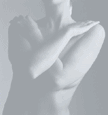Vulvodynia
Vulvodynia is chronic pain of the vulva that is present some, or most of the time. The sensation can be described as burning, stinging, rawness, itching, aching, soreness and/or throbbing. The exact cause is unknown, but many believe it can be triggered by antifungals, allergens, chronic conditions, hormonal changes, pelvic floor problems, foods and/or neurologic issues.
Many women suffer with vulvodynia in one form or another for many years without being accurately diagnosed or treated. It can ruin their day to day life as well as have an impact on their sexual function. Some of these women are treated for yeast infections or for other vaginitides and never find out the true diagnosis. One patient had a hip replacement for what was actually vulvodynia.
Vulvodynia has been reconfigured by the International Society for the Study of Vulvovaginal Diseases. Vestibulitis (or pain with intercourse or introital-dysparunia) is now called Localized Provoked Vulvodynia. It is pain that is caused to happen at a specific point on the vulva. Usually the inciting pain is intercourse, speculum exam and/or tampon insertion. Generalized Unprovoked Vulvodynia is chronic vulvar pain (either itching, stinging, or pain), with no other source, i.e. no vaginitis, and no vulvo-dermatologic conditions.
Evaluation of vulvodynia involves taking a history including all the previous medications, culture results and other tests that have been done. Physical exam includes visual exam, Q-tip test, and evaluation of the pelvic floor muscles. (The pelvic floor is make up of many muscles. Any of these muscles can be damaged due to many causes. Like other muscles which can be strained or torn they can cause pain with various activities.) A complete exam is necessary to find out if one has myofascial pain syndrome. This exam, while it can be painful, provides the physician with a wealth of critical information.
Treatment is different for each person. Some physical treatments that we tend to use are: pelvic floor physical therapy (which focuses on the muscles that are hurt), retraining muscle release work, bio-feedback, as well as the use of dilators. Medications that are used include lidocaine for local pain relief (both the gel form and the ointment). Some patients may be treated with trigger point injections of lidocaine and/or steroids, or in cases where that does not provide sufficient relief, with Botox and lidocaine. We also use medications that affect neurologic pain, including Neurontin, Lyrica, and the tricyclics antidepressants.
Very often it takes a number of visits and treatments before the symptoms of vuvlodynia can be completely relieved.



